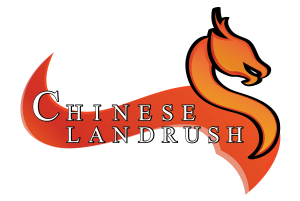We preach it all the time here on the blog: foreign (western) brands and businesses should seriously consider modifying certain aspects of their digital strategies to perform at a higher level in China in terms of visibility, credibility, and profitability.
Why?
Because the Chinese online consumer population is largest in the world, and it’s only growing. A recent study reported that a whopping 36% of China nationals purchase goods and services from digital platforms, at least once per week. That’s a weekly total of over 500 Million people, nearly double the amount of the entire United States population! In the wake of this unprecedented e-commerce growth, foreign brands haven’t quite figured out how to keep up in terms of successfully marketing to and reaching this massive population.
Foreign brands big and small are still relying on many outdated methods of reaching Chinese consumers, such as email marketing, even though email as a tool is being used less and less in China in favor of popular and easy-to-use communication platforms such as WeChat.
In the midst of e-commerce completely taking over as the primary method of Chinese consumerism, foreign brands should react quickly and stay on top of the digital trends in China, including the utilization of their Chinese localized brand, products, and services through the use of fully-Chinese websites for marketing purposes built on an exclusive, newly-approved Chinese domain extension.
Last month’s formal approval by the Chinese government of the new Chinese domain extensions .在线 (“Dot Chinese Online”) and .中文网 (“Dot Chinese Website”) to be legally marketed and sold by approved vendors in China mean big news for foreign brands and businesses, as relevant fully-Chinese web addresses can now be used, more than ever before, as a powerful tool to leverage within China to reach more consumers and lead them to your site or promotion whether it’s through mobile or desktop.
Case in point, tech giant Amazon has adopted and currently utilizes the fully-Chinese domain name 亚马逊.在线 (amazon.online) as a redirect to its Chinese site, amazon.cn.
Smart move, Amazon!
Another strategy that continues to grow in use and popularity, which we’ve also covered on the blog before as well, is the online-to-offline buying phenomenon, better known as O2O. Let me remind you that O2O sales is expected to top $626 billion by 2018 as the rate of Chinese consumers interacting with brands online and offline is taking place at a higher rate each day. Foreign brands must take note. The O2O revolution is already underway, and foreign brands and businesses can once again utilize this strategy to bolster their presence in China, with a website built on a relevant Chinese domain name.
Several foreign brands and businesses are beginning to adopt the aforementioned Chinese domain extensions and put them into use as they aim to diversify their digital marketing strategies and take advantage of the e-commerce boom in China. In fact, here at ChopChop we plan to roll out a series on the blog highlighting these various brands and businesses (beyond our Amazon example) who have adopted and are currently utilizing the .在线 and .中文网 extensions.
Whether it’s sitting on a desktop computer, or through a mobile device, digital addresses, including e-commerce sites cannot operate without a domain name. Legal Chinese extensions .在线 and .中文网 operate as a credible, powerful, and rational tool to reach this massive and growing online Chinese population.
Don’t let your business lag behind. Not only will you be protecting your brand, but you will also employ a digital strategy that makes sense to a population of over 1.4 billion and the largest e-commerce market in the world.
*This is a courtesy republishing of the original blog article posted over on ChopChop.news
